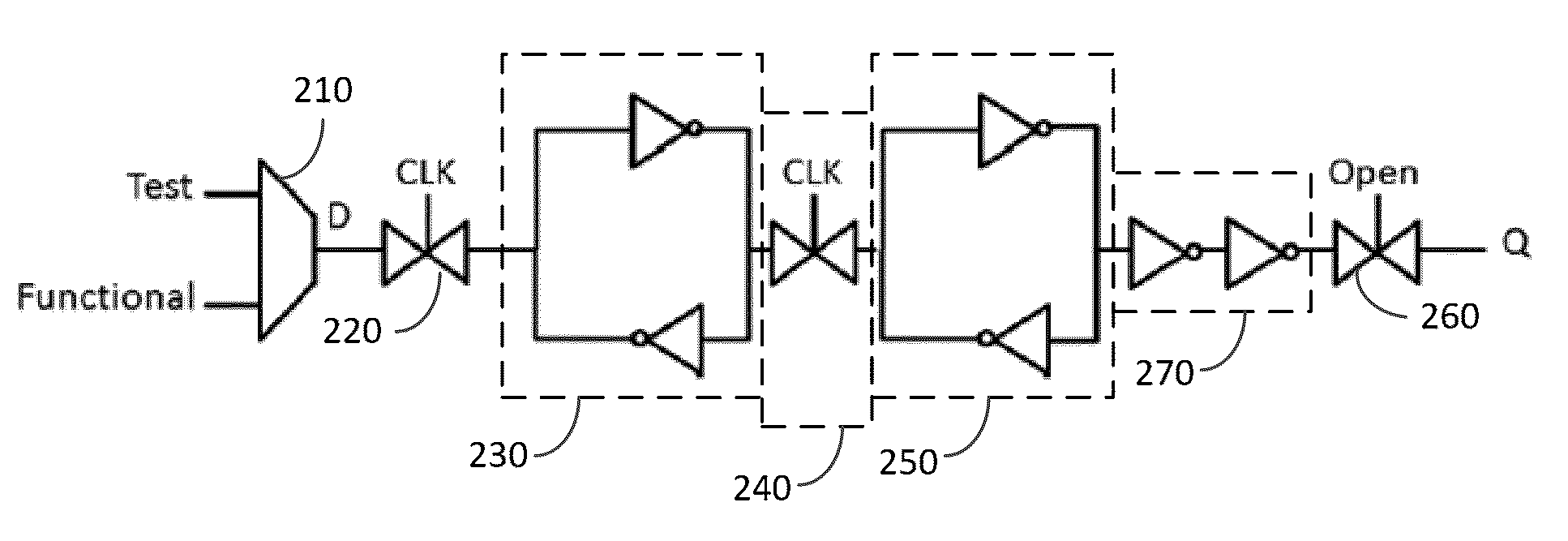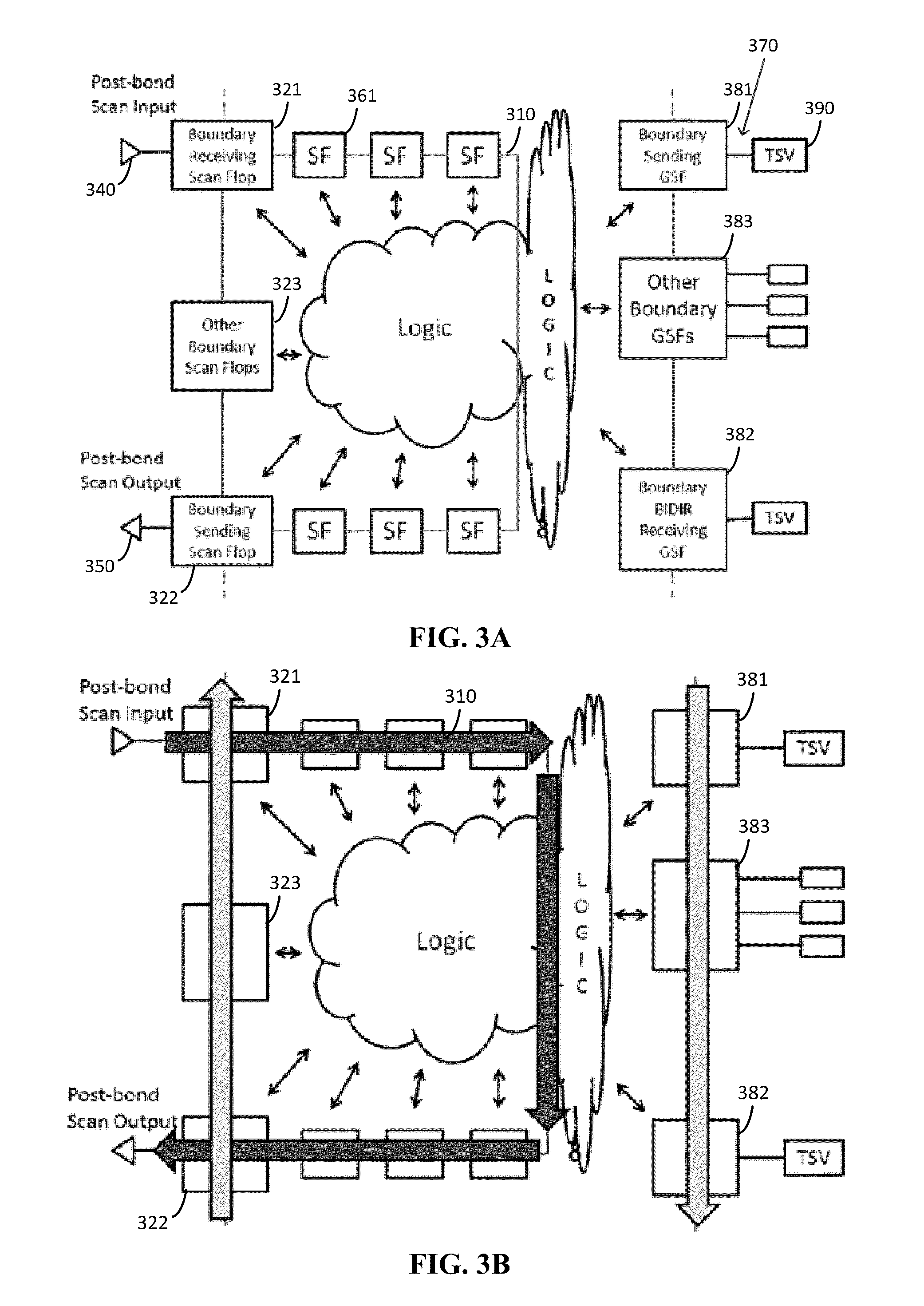SCAN TEST OF DIE LOGIC IN 3D ICs USING TSV PROBING
a technology of 3d ics and die logic, applied in the direction of electronic circuit testing, measurement devices, instruments, etc., can solve the problems of limiting the benefits of further scaling, reducing the interconnect length, power consumption and footprint, and reducing the quality of the product, so as to facilitate the localization and repair of defects
- Summary
- Abstract
- Description
- Claims
- Application Information
AI Technical Summary
Benefits of technology
Problems solved by technology
Method used
Image
Examples
examples
[0050]Simulations were conducted in HSPICE on a 3D logic-on-logic benchmark with 100 scan chains and using the configurations as illustrated in FIGS. 4A and 5.
[0051]For the examples, a 3D IC benchmark was created from a Fast Fourier Transform (FFT) circuit chosen from the OpenCores set of benchmarks. The FFT circuit is synthesized using the Nangate open cell library at the 45 nm technology node. The total gate count after synthesis is 299,273, with 19,962 flip-flops. The design was partitioned into 4 dies, with the gate counts in each die being 78,752; 71,250; 78,367; and 70,904, respectively. The logic gates in each die are placed using the CADENCE ENCOUNTER platform, a registered trademark of Cadence Design Systems, Inc., and TSVs are inserted in a regular fashion, using a minimum spanning tree approach. Back-to-face bonding is assumed, which means that TSVs are present only in the first three dies. The TSV counts are 936, 463, and 701, respectively. The TSV diameters in this chip...
PUM
 Login to View More
Login to View More Abstract
Description
Claims
Application Information
 Login to View More
Login to View More - R&D
- Intellectual Property
- Life Sciences
- Materials
- Tech Scout
- Unparalleled Data Quality
- Higher Quality Content
- 60% Fewer Hallucinations
Browse by: Latest US Patents, China's latest patents, Technical Efficacy Thesaurus, Application Domain, Technology Topic, Popular Technical Reports.
© 2025 PatSnap. All rights reserved.Legal|Privacy policy|Modern Slavery Act Transparency Statement|Sitemap|About US| Contact US: help@patsnap.com



